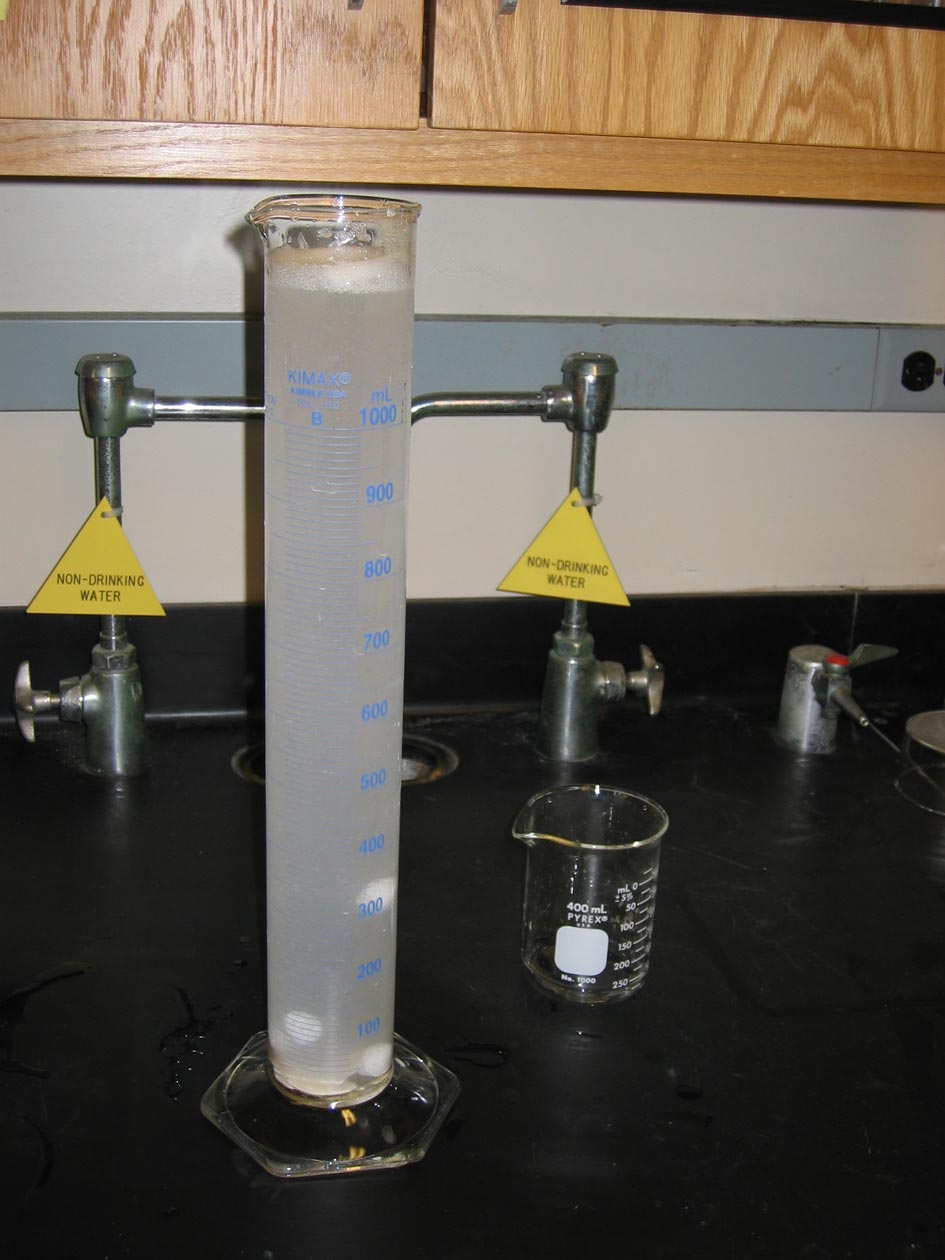Ford's "Educated Moth Balls"
 Moth balls are added to water. They sink. Sea shells are added and the solution is made acidic. The moth balls float to the surface, then descend, then float to the surface again.
Moth balls are added to water. They sink. Sea shells are added and the solution is made acidic. The moth balls float to the surface, then descend, then float to the surface again.
Ingredients: moth balls, dilute hydrochloric acid, sea shells, tall graduated cylinder
Procedure: A complete recipe follows.
1. Fill the tall graduated cylinder with a dilute solution of hydrochloric acid.
2. Drop bits of sea shell into the cylinder.
3. Add a few small moth balls to the cylinder and observe.
Understanding: This is precisely the reaction underlying the dissolution of marble statues by acid rain. The calcium carbonate of the marble is relatively insoluble at neutral pH but becomes increasingly soluble as the solution becomes more strongly acidic. The carbon dioxide is a product of the dissolution reaction
CaCO3(s) + 2 H+(aq) → Ca2+(aq) + CO2(g) + H2O(l)
The bubbles that form in the solution are carbon dioxide gas.We have discussed hydrophobic molecules, like hydrocarbons, and hydrophilic molecules, like sugars. Hydrophilic molecules, like sucrose, often have polar functional groups that interact favorably with water through hydrogen bonding. Introducing a sucrose molecule into water, water-water hydrogen bonds are broken, but new water-sucrose hydrogen bonds are formed.
Hydrophobic molecules, like octane, are unable to form hydrogen bonds with water. Introducing the octane into water, water-water hydrogen bonds are broken, but no octane-water hydrogen bonds can be formed. In the effort to preserve the favorable hydrogen bonds between water molecules, the hydrophobic octane molecules are largely excluded from the polar water solvent.
In the demonstration, the bubbles of carbon dioxide gas are hydrophobic. They cling to the sides of the waxy, nonpolar, and hydrophobic moth balls. The moth balls are only slightly more dense than the surrounding water. When enough tiny bubbles of carbon dioxide cling to their sides, the moth balls become buoyant and rise to the surface. At that point, the bubbles prefer to join the atmosphere and the moth balls fall to the bottom of the cylinder where they again collect bubbles and begin to rise. And so on!
This experiment makes an interesting dinner table centerpiece. If the reaction slows down, add additional acid.
The most hydrophobic object around
Question: What is more hydrophobic, a molecule of a hydrophobic hydrocarbon, or an air bubble of a similar size? Justify your answer through a discussion of intermolecular interactions.You can check your answers here.